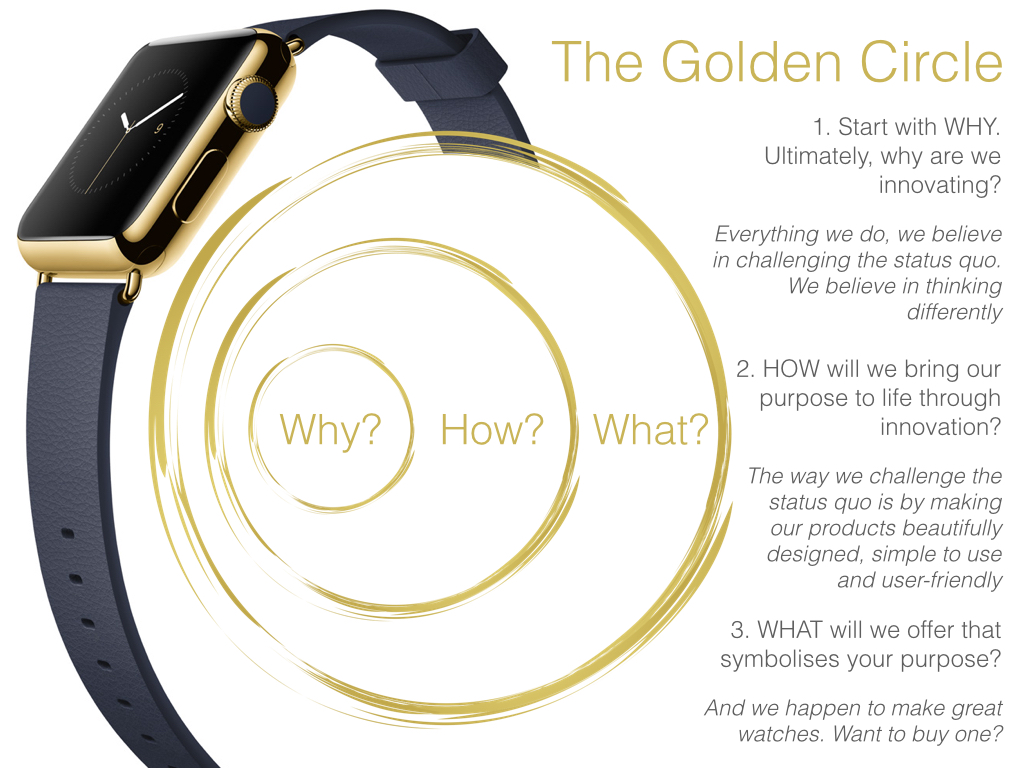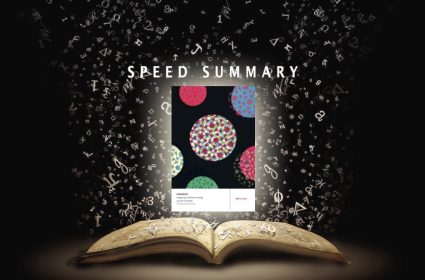Start with Why [Speed Summary]

- Start With Why: How Great Leaders Inspire Everyone To Take Action
- Author: Simon Sinek
- Publisher: Penguin
- Publication date: 2011
Why do we buy what we buy? Trained ethnographer Simon Sinek offers a simple and compelling answer in his ever-popular business bestseller on leadership, innovation and marketing, Start with Why.
We buy what what we buy because what we buy symbolises and signals our take on why we’re here – our purpose. Consuming, like leading, is a communicative act. For example, we don’t buy Apple products just because Apple makes great gadgets. Nor do we buy Apple products because of commercial carrots and sticks, otherwise known as greed and fear. No, we buy Apple products because we share Apple’s purpose and raison ‘d’être – challenging mediocrity, championing creativity, and doing so with style. Bottom line. People don’t buy what you do, they buy why you do it.
Limbering up the Limbic System
For Sinek, the reason to start with why is that it fits with how our core emotional brain – our limbic system – works. We are motivated by evolved desires to fit in (sense of belonging) and stand out (sense of status), and brands are markers that help us do this by signalling shared purpose and values. Shared values also signal trust and trustworthiness, the foundational trait that makes human cooperation, including leadership possible. So whilst our outer brain – our rational neocortex – can process the what and the how, our emotional limbic brain is motivated by the why. That’s why products – and leaders – only feel ‘right’ when there’s a why behind what they do.
For Sinek, Starting with Why means seizing three clear business, leadership and marketing opportunities.
The Golden Circle
The first opportunity is to leapfrog your competitors stuck in a rut because they are communicating what they do and how they do it. Instead, start any innovation or marketing brief with a ‘Golden Circle’ of three concentric rings of WHY, HOW, and WHAT, and start with the WHY. Ask yourself WHY are we doing this, and only once you have nailed this, move onto the how and the what. Then preface all you say and do with this why. For example,don’t say we make watches (WHAT), they’re brilliantly designed (HOW). Start instead with the Why.
Everything we do, we believe in challenging the status quo. We believe in thinking differently. The way we challenge the status quo is by making our products beautifully designed, simple to use and user-friendly. And we happen to make great watches. Want to buy one?

The Celery Test
The second opportunity is to align your portfolio – and behaviour – with the ‘celery test’. If you start with why, consumers can look at your range of products or services and immediately know what you’re all about – what you stand for. It’s like seeing a supermarket basket full of healthy products, including rice milk and celery. But if you have a bag of M&Ms in the basket, the message is muddled and the power of why is diminished. So take the celery test – is your product line-up coherent in signalling why you do what you do? Likewise for your behaviour, do your whats signal a consistent why? If not, you are missing out on sales and success.
Values Trump Needs
The third opportunity for innovators and marketers is to upgrade our segmentation strategy. From a Start with Why perspective, don’t seek to do business with everybody who needs what you have, instead do business with people who believe what you believe. In other words, embrace values-led innovation and marketing. Of course, addressing needs with solutions is important, but without a why there will be little motivation to choose your solution.
For example, TiVo focused on addressing needs with its much lauded PVR, pause TV when you need to, rewind live TV when you need to, and skip ads when you feel the need. But TiVo was a commercial failure. Sinek suggests that what TiVo should have done is lead with values. “If you’re the kind of person who likes to have total control of every aspect of your life, boy do we have a product for you…”
The Brand Genetics Take
Ultimately the message of Start with Why is simple. Answers to the WHY question motivate, whereas WHAT and HOW questions leave us cold. So if you want to motivate people to buy your stuff, start everything with WHY. The research, the concept board, the design, the communication. Start with why is a useful framework, and we’ve found that the Golden Circle and Celery Test are practical tools that can guide motivational research and innovation. Ultimately though, whilst Sinek talks the ‘Why’ talk, for us, what he’s really saying is that what matters is not the ‘Why’ but the ’Who’. Smart marketing is about helping people be who they are and want to be.




